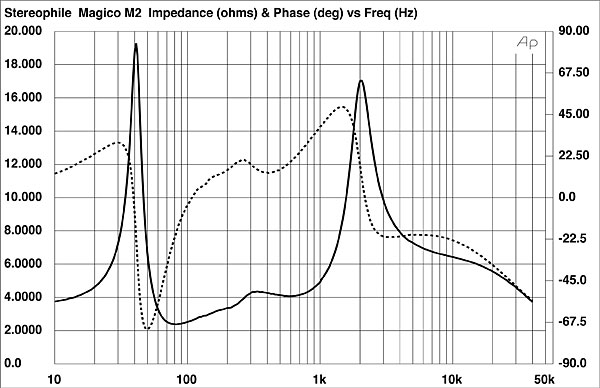In reality, only a DC signal would produce a constant load of certain resistance number from a loudspeaker. We don't listen to DC and the speaker impedance is never a constant...
Impedance is the
"effective resistance of an electric circuit or component to alternating current, arising from the combined effects of ohmic resistance and reactance".
Magico M2 impedance just as an example.
From Stereophile review/measurements section on the Magico M2 (just as an example)
Although Magico specifies the M2's sensitivity as 88dB/W/m, my estimate was slightly lower, at 86dB(B)/2.83V/m.
The M2's impedance is specified as 4 ohms. My measurements indicated that the impedance magnitude (fig.1, solid trace)
was close to 4 ohms in the midrange but drops to 2.3 ohms between 74Hz and 88Hz. The electrical phase angle (dashed trace) reaches –71° at 50Hz. Although the magnitude at this frequency is
6.5 ohms, this phase angle
significantly increases the current needed from the amplifier. This, and the combination of
3.2 ohms and –54.5° at 60Hz, means the
M2 will be a demanding load. The single i
mpedance peak at 40Hz indicates that this is the tuning frequency of the M2's woofers. The reduction in impedance above the audioband, in combination with an increasingly negative phase angle, is unusual. Loudspeakers typically have a rising magnitude in this region coupled with an increasingly positive phase angle, these both due to the tweeter's voice-coil inductance.


